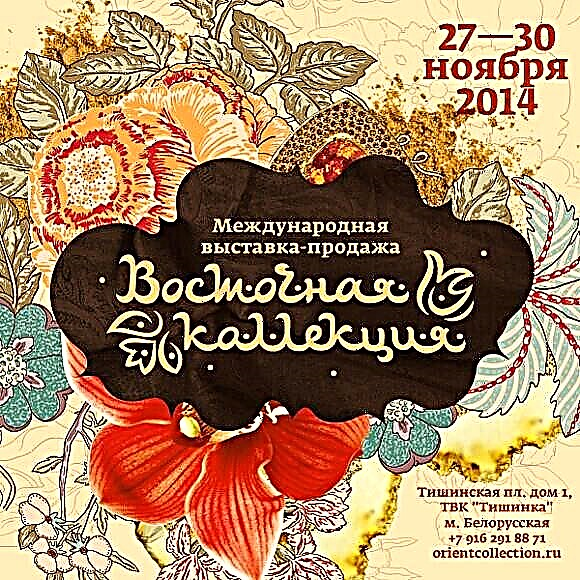Share
Pin
Tweet
Send
Share
Send
A polo closure is a distinctive detail of men's sports tennis shirts with a turn-down collar. But over time, like many other details of men's clothing, the polo clasp has also become part of women's clothing.

Polo (pulu) - the name of the medieval Persian ball game. Later this game was adopted by the Indians from the Persians, and only then the British. In 1871, the first major polo match took place in the UK, the players were the forerunner of modern tennis. And in 1926, the famous French tennis player Rene Lacoste already competed in the original white T-shirt, the emblem of which made a “smiling” crocodile. Soon, Lacoste launched its T-shirts into mass production.
In 1952, another, no less famous, English tennis player Fred Perry launched the production of colored tennis shirts with a traditional polo closure. The emblem of his sports shirts are colored stripes on the collar. Logo Perry chose a laurel crown. Well, when in 1972 Ralph Lauren launched the Polo Ralph Lauren line, the name “polo” was finally assigned to this shirt.
The traditional polo shirt has a fastener only to the middle of the front and a soft turn-down collar. True, this clasp is used not only on sportswear, but also on blouses, pullovers and dresses, giving the models a laid-back, informal style.
Using an example of a straight elegant blouse, we will show how to properly make a hidden polo fastener with piping.
- Special offer

- 1
- 2
- 3
- 4
Step 1. Kant

Sew the edges to the front along the marked lines of the seams for attaching the strips so that the edges lie on the part close to the seam lines, the flat parts of the edges are directed to the midline line. The lower end of the right edge extends beyond the transverse line to a length of 5 cm, the lower end of the left edge - to a length of 1 cm. Unscrew the lower end of the left edge to the edge of the allowance obliquely. Stitch edging close to the thickened part from the top to the transverse line.
Step 2

Sew front stitches along marked lines of stitch stitching seams with the front side to the front side (control mark 2), securing the piping and finishing the stitches at the transverse line. Fasten at the beginning and at the end of the seams.
Step 3

At the front, make a cut along the line of the middle of the front, not reaching 1 cm to the transverse line, in the corners make oblique notches. Seam allowances close to stitches. Iron the slats to cut. Iron the allowances for other longitudinal sections to the wrong side.
Fastener clasp: master class
Step 4. Shoulder stitches

Edges should be seen along the shoulder sections of the front. Before applying to the back and yoke backs with the front side to the front side, chop off the shoulder sections (check mark 4), fixing the edges. Iron seam allowances on yoke.Overlap the allowances for the lower cuts of the linings of the neck of the front. Place the front neck stitches on the inner yoke of the back with the front side to the front side, chop off the shoulder sections (check mark 4) and grind. Iron the seam allowances, then iron the open shoulder sections of the yoke on the wrong side. Iron over the bottom cut of the back yoke to the wrong side.
Step 5. Neck
Take the edging along the neckline to the fold lines of the front strips, at the fold lines, unscrew to the edges of the allowances obliquely. Fold the planks along the fold lines with the front side inwards, pin to the neckline cut. Pin the inner yoke of the back with the stitches to the neckline with the front side to the front side, aligning the shoulder seams, the ends of the stitches lie on the slats. To grind the yoke and grind, fixing the edging.
Cut the seam allowances close to the stitching, cut in several places on the rounding sections. Unscrew the inner yoke and trim to the wrong side. Fold the front slats along the bend lines with the wrong side inward, iron the edges. Pin the front ends of the stitches to the seam allowances of the stitching of the planks.

Pin the inner yoke to the allowances of the shoulder sections and the seam allowances of the sewing of the outer back yoke, sew manually.
Sewing knots: how to make a bar
Step 6. Polo Clasp

Pin the inner sections of the front strips over the stitching seams and the front seams. Stitch the front slats along the stitching seams close to the seams, securing the inner sections. Stitch the neck to the edge.Place the right bar on the left bar.

Cut the protruding end of the edging of the right plank close to the end of the seam, sweep the edging to the lower ends of the planks, rounding the corner, unscrew the end of the edging obliquely to the edges of the allowances, as shown in the figure, without fixing it in front.

Stitch the ends of the slats to the front between the notches. Iron seam allowances down.
Processing polo fasteners in knitwear: master class
Source and illustration: Burda 2/2018
Material prepared by Julia Dekanova
Share
Pin
Tweet
Send
Share
Send



